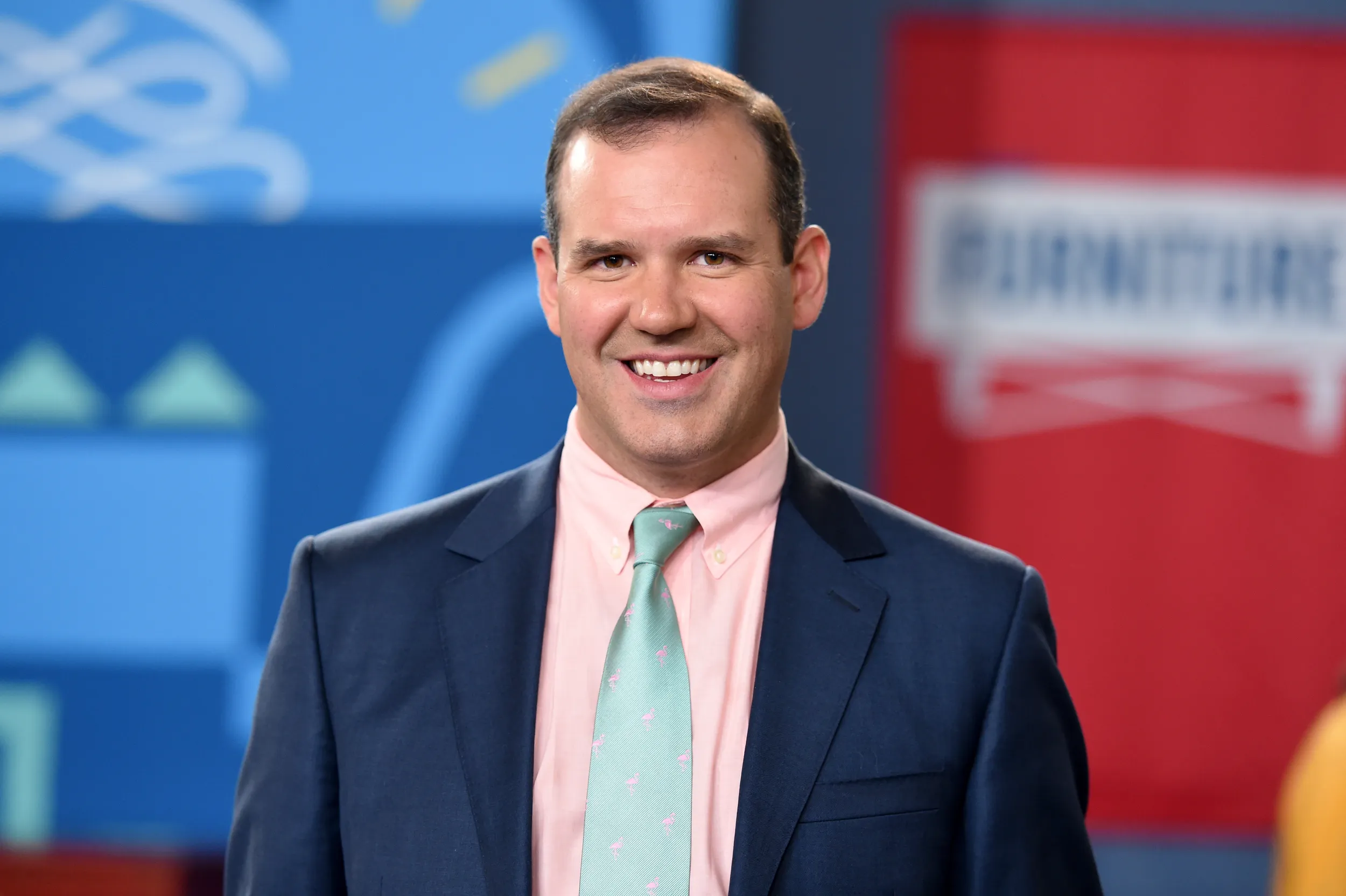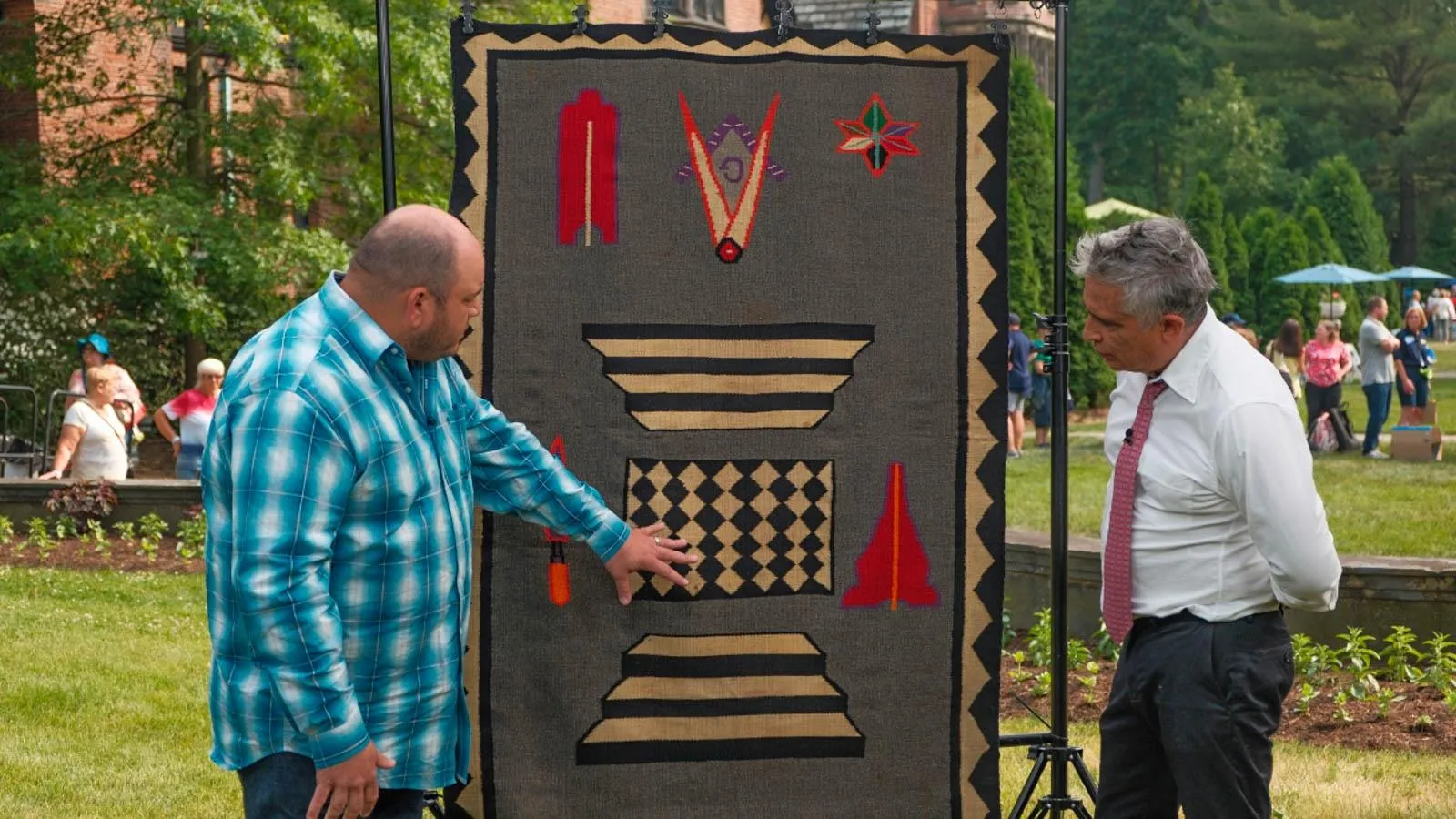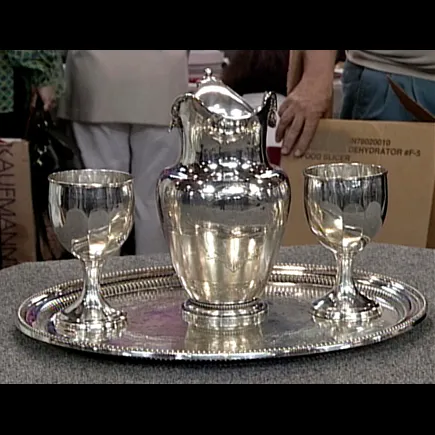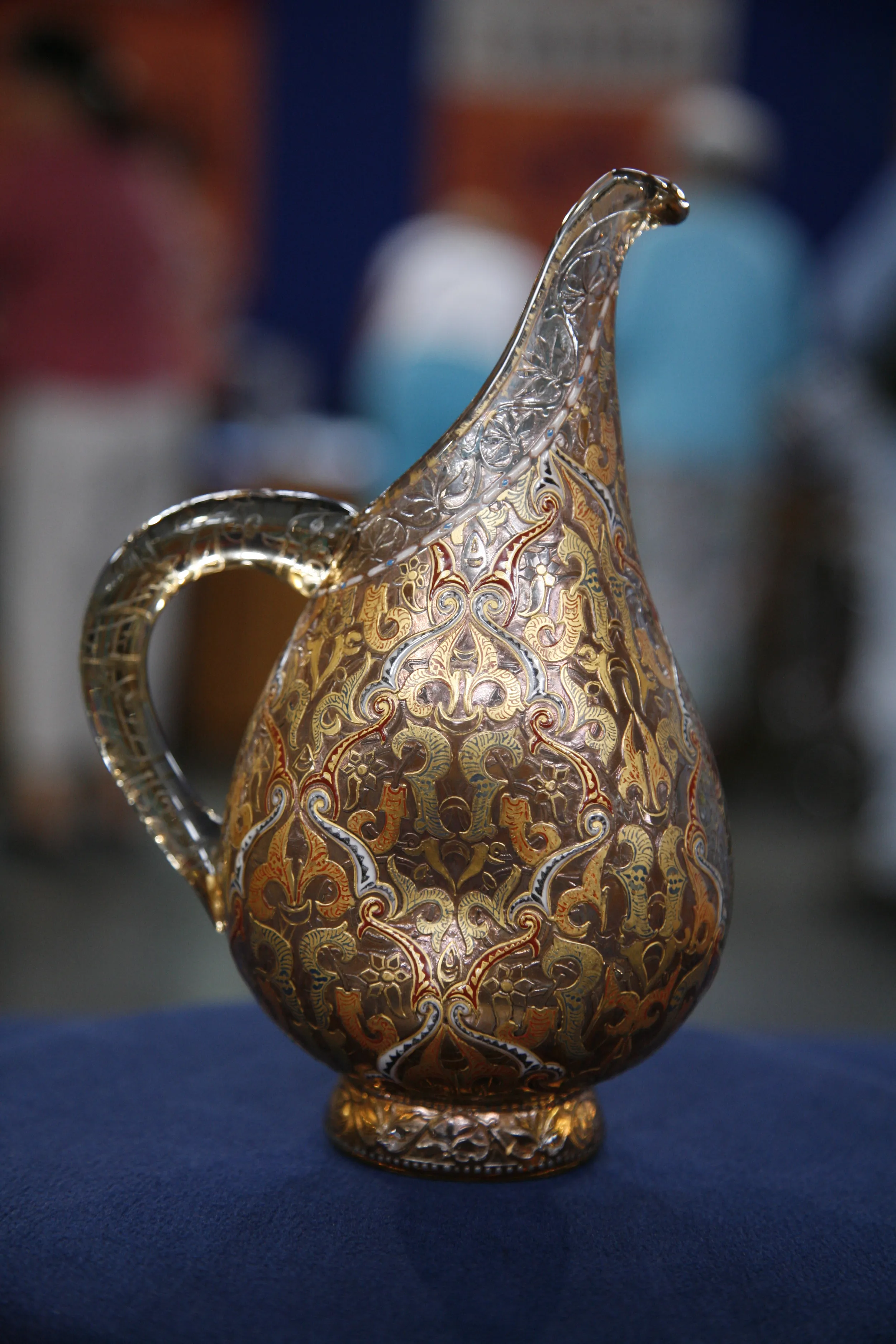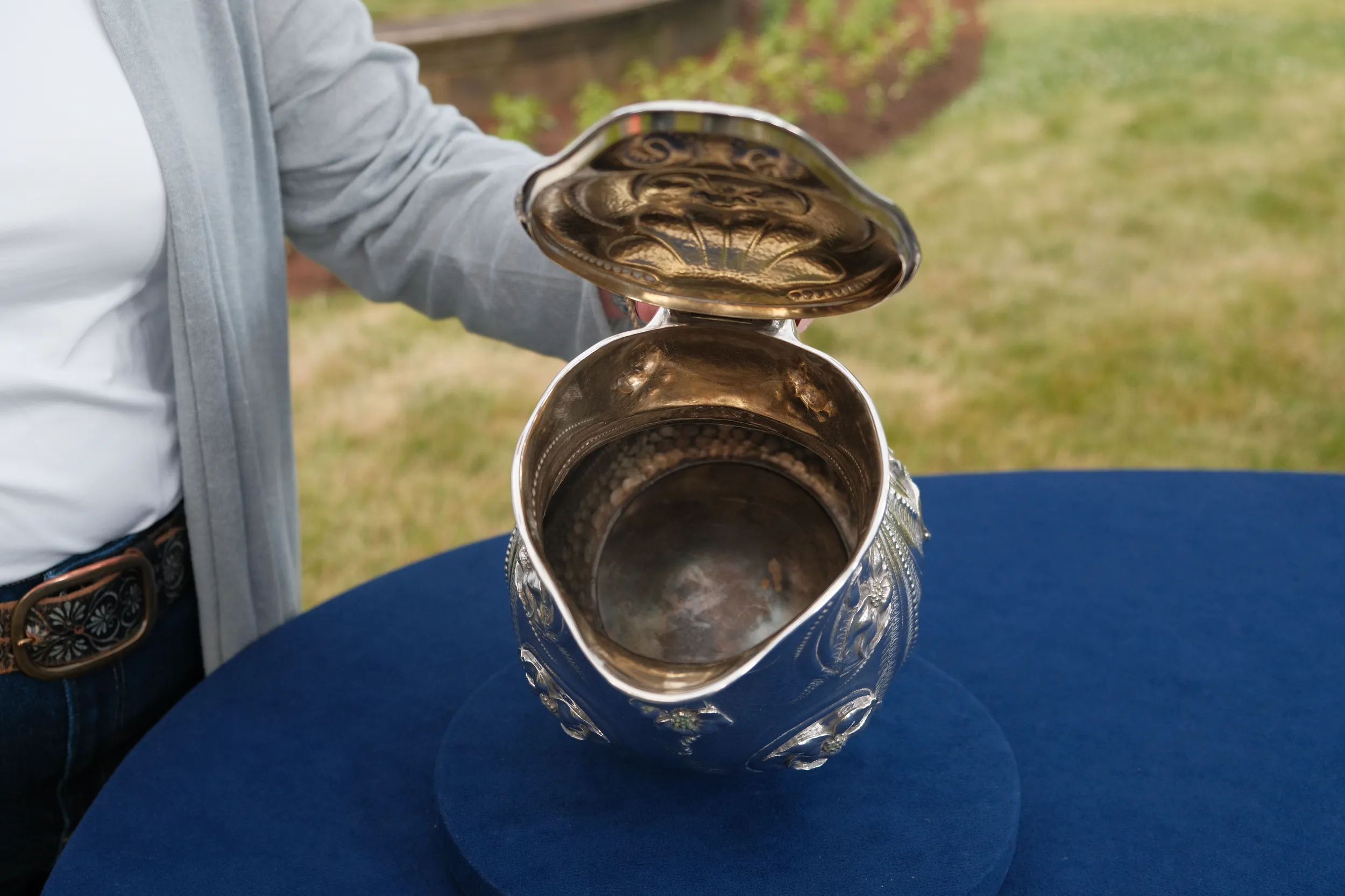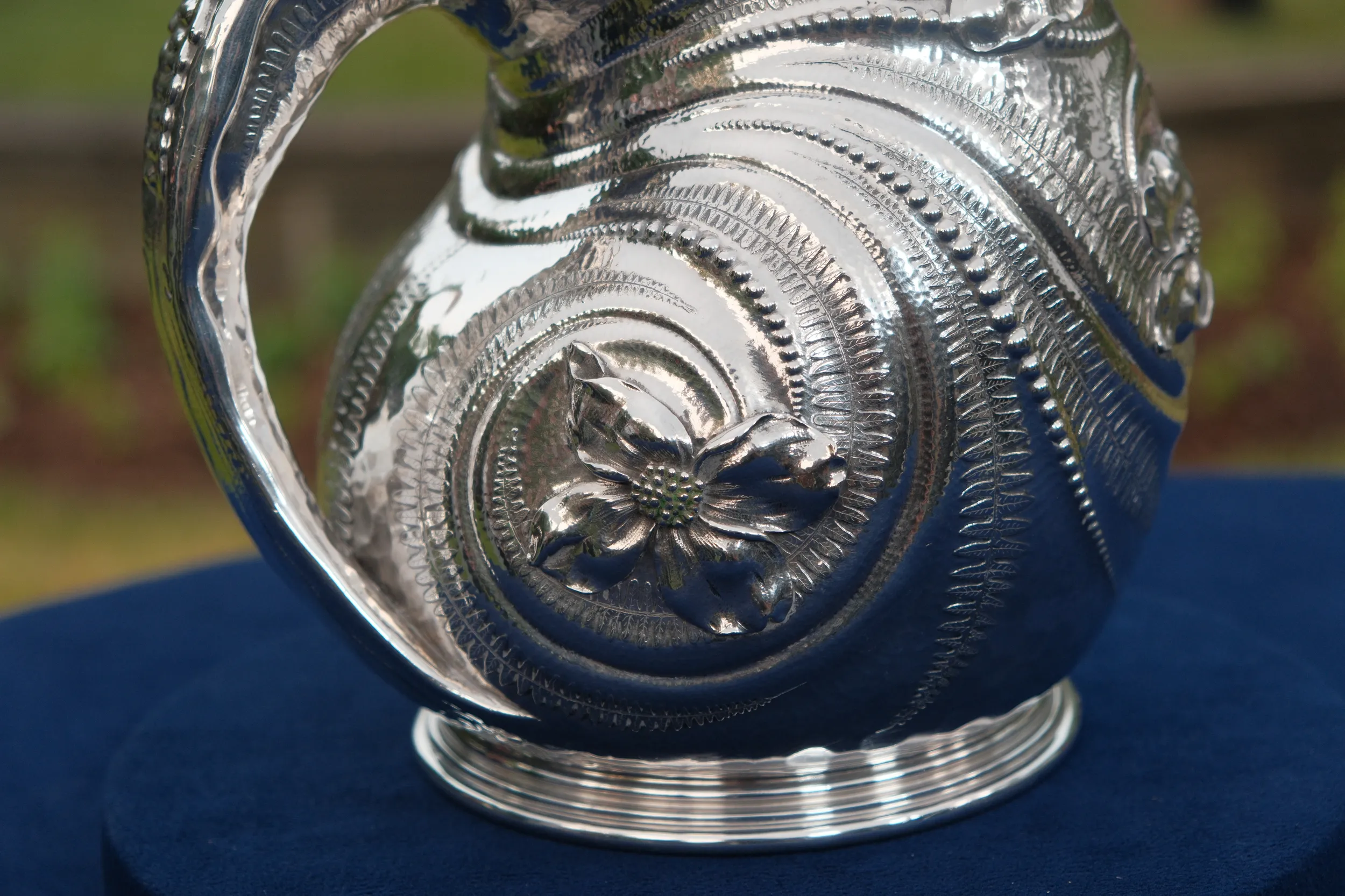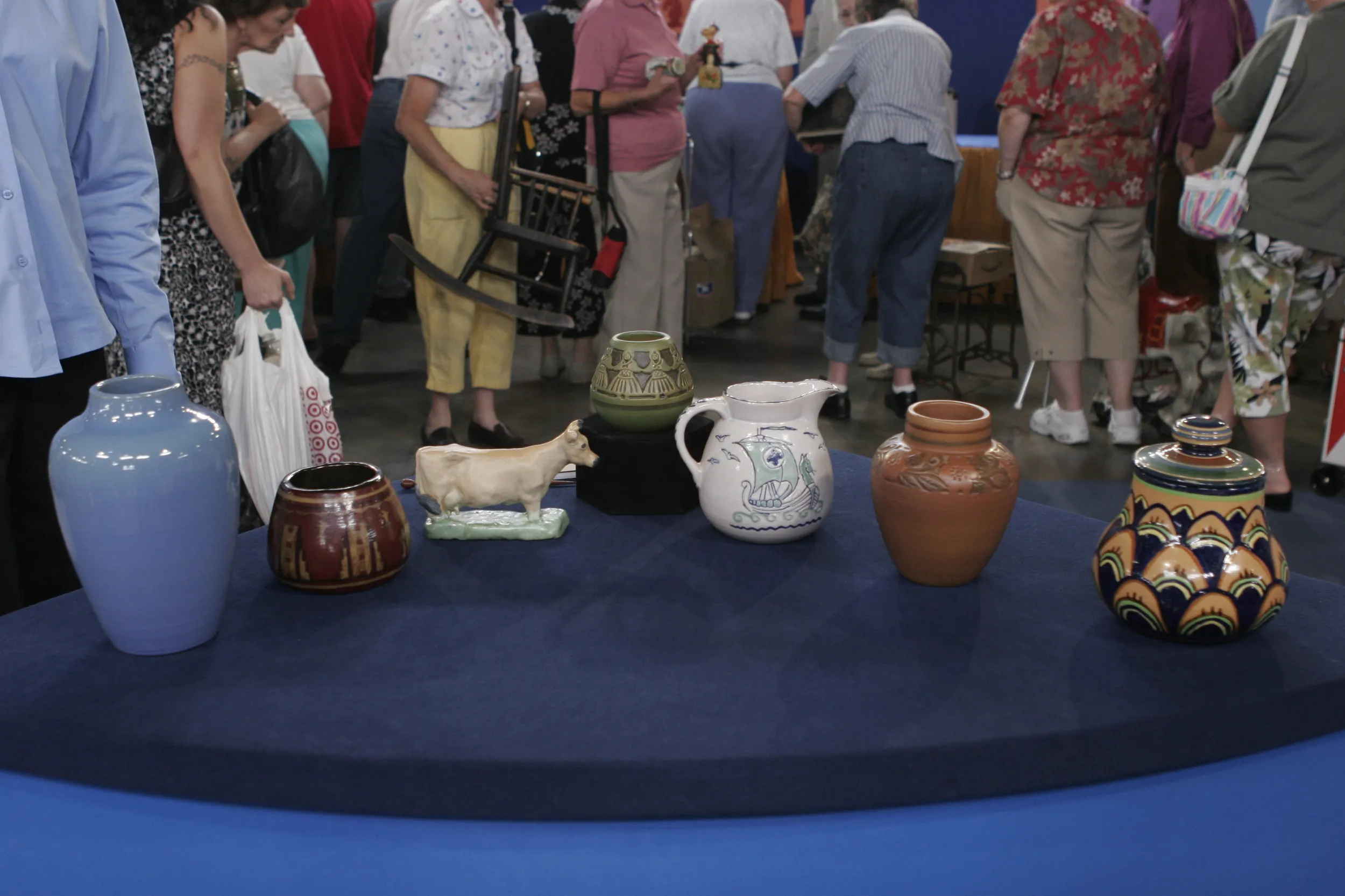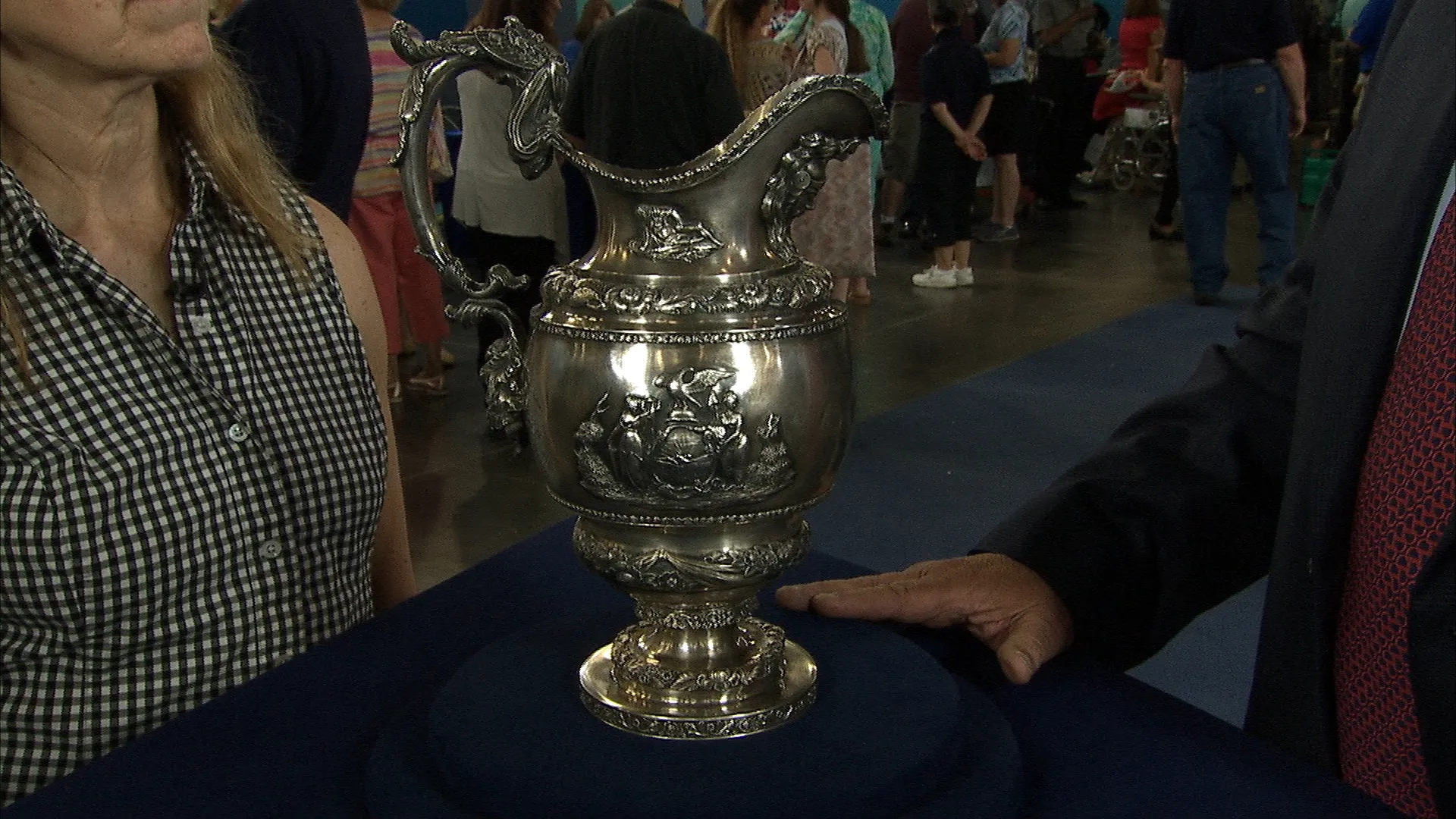GUEST: This is a silver pitcher my grandfather bought in London in 1949 through '50. My grandfather was in the military during World War II, and after the war, he was assigned to the London embassy as, as a, in the attaché office, and in the evenings, he wanted to do a hobby. He wanted something to keep him busy. And so he took up silversmith, and he was under the instruction of Robert E. Stone. And in the evenings, he would go to his workshop and take lessons. And one night, he was there, and he saw this piece in the workshop and asked Stone what he was doing with it. And he said he was going to melt it down to make something else. And my grandfather said he couldn't do that, it was too pretty. And so he purchased this from Stone for the price of silver per the weight of the item. And it's been in the family since then.
APPRAISER: Well, the important person to keep in mind with regard to this pitcher is a silversmith and designer named Charles Osborne. He was English-born, came to America when he was eight or nine years old, and by the time he was 23, he was the chief designer at a company called Whiting Manufacturing in North Attleborough, Massachusetts. Eventually, there ends up being a fire at the North Attleborough Whiting Manufacturing. They move their operations to New York City, where he becomes acquainted with the lead designer at Tiffany, a man named Edward Moore. He resigns from Whiting, joins Tiffany and Edward Moore in 1879. Immediately after that, Tiffany's designs change. They become organic in a way that they never had been before. They start to incorporate spirals and floral devices in a way that they've never done before. Organic motifs throughout. Even the shape of this piece is this sort of sensuous curve that is, uh, heretofore unknown at Tiffany. So Osborne brings all of this creative energy to Tiffany and designs these incredible pieces of silver, right from 1879 through when he leaves in 1887. Tiffany was very fastidious in their marking process. And you can see this "Tiffany Makers, sterling silver." And then the pattern number 5942. Tiffany pattern numbers are pretty well-documented. The pattern number 5942 refers very specifically to the date 1880. It's a period-engraved name "Henderson" along that bottom edge. One would have to imagine that is a commission of some sort. It's a water pitcher, which do tend sometimes to be standalone objects. A technique which Osborne became very well-known for is called pearling, or chased pearling. And that's what you see on these undulating lines and spirals, all hammered out with tools by a group of chasers, and descending in size…
GUEST: Mm-hmm.
APPRAISER: ...and in form in two different directions. You also see another characteristic of Osborne's work in these hexagonal hammer marks...
GUEST: Mm-hmm.
APPRAISER: ...which is something that he became known for, as well.
GUEST: Mm-hmm.
APPRAISER: So we can very safely ascribe this piece to Charles Osborne, maybe with Edward Moore's influence, as well.
GUEST: Wow.
APPRAISER: Do you know what the price of silver was back in 1951, when your grandfather got it?
GUEST: (laughing) No, no. (clears throat) No, I think I did at one time. It was less than $100.
APPRAISER: There is a really healthy appetite for silver from this period in American design. If this were to be estimated for auction purposes, we'd suggest an estimate of $25,000 to $35,000.
GUEST: Wow. Wow. (laughing) That's impressive.
APPRAISER: Now, if it's something that you're interested in having insured...
GUEST: Yeah?
APPRAISER: ...that insurance value would be closer to $55,000 or $60,000.
GUEST: Wow. Wow. (laughs) And it's just a piece of pretty silver. (laughs)
